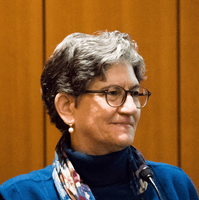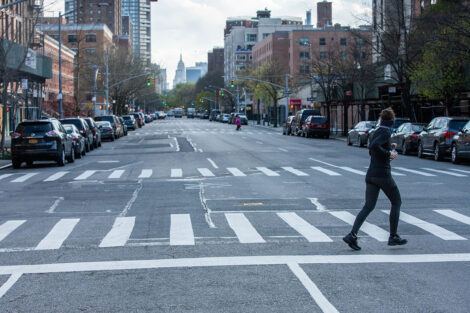July 20, 2021 – Over the course of the COVID-19 pandemic, policymakers and the public have often vehemently disagreed about the pros and cons of restrictions such as lockdowns. Proponents of restrictions argue that they save lives; opponents say they destroy livelihoods. Amid these often nasty debates, researchers have been churning out benefit-cost analyses that aim to shed light on which restrictions are “worth it” and which aren’t.
“There are now a huge number of these analyses,” said Lisa Robinson, senior research scientist and deputy director of the Center for Health Decision Science at Harvard T.H. Chan School of Public Health. “It’s become an enormous undertaking.” For her part, Robinson has been exploring the complexities involved in valuing deaths averted by COVID-19 policies, using a well-established but widely-misunderstood metric called the “value per statistical life,” or VSL.
In the big picture, analyses of COVID-19 policies need to take into account how many lives they could potentially save, of course. But they also need to consider the potential downsides. For instance, how many people could lose their jobs if a state puts a lockdown into effect? What educational losses will occur among kids who miss months of in-person school? If restrictions on restaurants are lifted, how do we weigh the economic benefits against the potential increase in COVID-19 cases—and the deaths that might result?
“What benefit-cost analysis does is require people to carefully and rigorously explore the impacts of a policy,” Robinson said. “Something may sound like a great idea on the surface, but digging more deeply into its real-world effects often unearths unexpected consequences. These analyses also highlight the trade-offs implicit whenever we make a decision about how to allocate resources.”

Assigning a money value to life
Robinson has been exploring how best to estimate the VSL—a metric commonly used to evaluate lifesaving interventions—in analyzing the relative costs and benefits of COVID-19 policies. She tackled the issue in a study she co-authored last year, which a recent article in The Economist characterized as “the best attempt at weighing up these competing valuations.”
Although the phrase “value per statistical life” suggests that the government, or someone else, is somehow placing a value on someone’s life, Robinson emphasizes that this is not the case. Rather, economists start by investigating how much of their own income individuals are willing to exchange to reduce their own chance of dying by a small amount—such as by paying extra to buy a safer car or choosing a less risky job for lower pay. These estimates are then converted into estimates of value of reducing expected deaths—that is to say, into the VSL.
Policymakers often use VSL, for example, when determining what safety requirements to impose on automobiles or how low to set standards for pollution emissions. In looking at the population as a whole, U.S. regulatory agencies making benefit-cost calculations currently estimate the VSL as roughly $10 or $11 million. A $10 million VSL means that a typical individual is willing to pay $1,000 to reduce his or her chance of dying within a given year by 1 in 10,000, Robinson explained in a 2020 blog post that looked at COVID-19 benefit-cost analysis and the VSL.
She noted, however, that the $10 million or $11 million figure is for the average member of the population—for someone middle-aged. An individual’s willingness to pay to reduce mortality risk may not stay the same across their life course. For example, older people have fewer expected years of life remaining than the average member of the population, and less opportunity for future earnings, which could change the VSL calculation and therefore make a difference when COVID-19 policies are assessed.
Yet another consideration to take into account is the value people may place on avoiding the substantial pain and suffering caused by COVID-19—including struggling to breathe, or being put on a ventilator—which could increase the VSL. In an October 2020 paper, Robinson’s colleague and frequent co-author James Hammitt, professor of economics and decision sciences, also noted that people may be more likely to place a higher value on avoiding risks they view as “dreaded, uncertain, catastrophic, and ambiguous”—like COVID-19.
The overall point, according to Robinson, is that analysts and policymakers comparing the benefits and costs of particular COVID-19 policies should take care to examine uncertainty in the VSL estimates. VSL is likely to vary depending on who is affected by the policy and by how they view the risks that they experience.
She acknowledges the difficulty involved in deciding on COVID-19 restrictions. But she is also gratified to see that people are using benefit-cost analysis to carefully explore the implications of those tough decisions.
“When COVID hit, benefit-cost analysis really got a lot of attention in the mass media,” she said. “I was so excited that this field that I’ve been involved in for so long is now the subject of stories in major news outlets like the New York Times and the Wall Street Journal. People are really paying attention to its usefulness in policymaking.”
photo: Anthony Quintano/Wikimedia Commons
